Wildfires and Wildlife: Relocating Coastal Rainbow Trout to the Arroyo Seco Stream
Human interaction has negatively impacted the hundreds of streams that run through Southern California. Man-made river and stream diversions, channeling, and damming have changed the physical and chemical characteristics of these waterways. In addition to physical impairments, climate change is increasingly impacting the ecosystems of streams.
To evaluate and mitigate these negative impacts, local groups are monitoring the riparian habitats of these streams and are conducting water surveys that document rainbow trout populations and evaluate water quality.
One such group, the Arroyo Seco Foundation (ASF), is leading this effort with rainbow trout monitoring in the mountains of Pasadena, California, with financial support from the California Wildlife Conservation Board, Accelerate Resilience LA, and the Rose Foundation.
The anadromous steelhead trout historically migrated from the ocean to the mountains and spawned rainbow trout, which in turn would migrate back to the ocean. However, human activities and natural events have threatened the species and their migration, prompting the need for intervention.
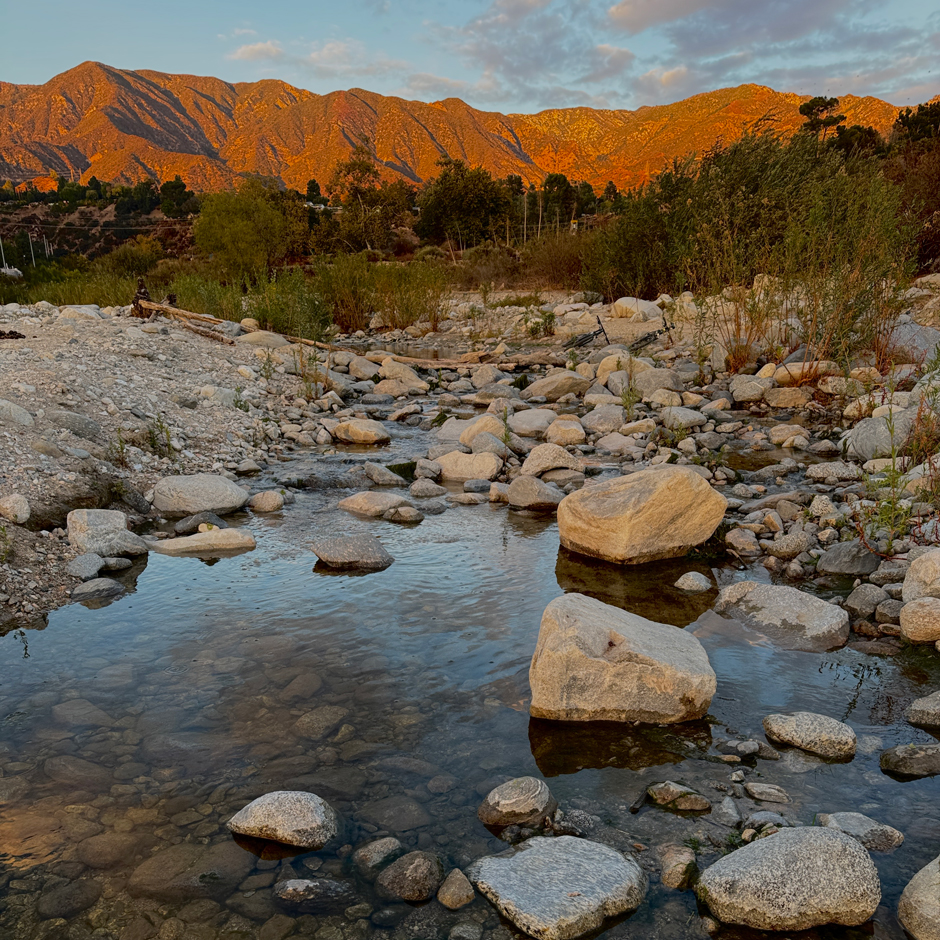
The waters of the Arroyo Seco flow south from the San Gabriel Mountains. (Credit: © Robert Kurkjian (2025))
Ecological Impacts of Wildfires
Such influxes can lead to stream water fluctuations in dissolved oxygen, pH, turbidity, and temperature, all of which negatively impact fish health and habitat suitability. Ash may contain lead, dioxins, and other chemicals, and the fire retardant used to treat fires can directly contribute to the morbidity of trout.
After the Bobcat Fire, California Department of Fish and Wildlife (CDFW) biologists conducted surveys and found that the extensively burned watersheds had left little vegetation on the mountainside, which meant subsequent rainfall would increase mountain erosion of the loose soil, ash, and debris. This influx would only further degrade water quality, leading to high mortality of native fish throughout the San Gabriel River.
There were also concerns that forest and land destruction resulting from the fires can impact fish health as felled trees can trap fish and create passage barriers, which limits fish migration and degrades the habitat.
In response, CDFW translocated rainbow trout to the Arroyo Seco stream, which also flows through the San Gabriel Mountains of Los Angeles County.
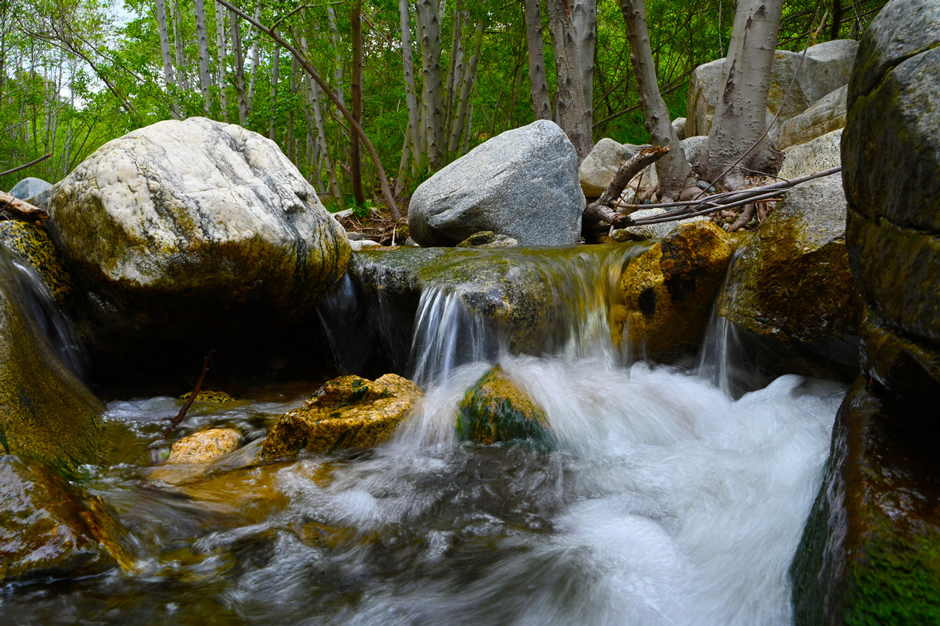
The Arroyo Seco stream in the San Gabriel Mountains of Pasadena. (Credit: © Robert Kurkjian (2025))
Moving Rainbow Trout to the Arroyo Seco Stream
CDFW personnel rescued 469 rainbow trout from endangered habitats in the San Gabriel River and translocated them to the Arroyo Seco to increase the chances of their survival.
Fish rescues and translocations took place over two days in November and December 2020. Each of the transported fish had their adipose fins clipped for future identification, as well as for genetic testing.
In 2020, ASF took over monitoring rainbow trout in the riverway, in addition to monitoring water quality to evaluate habitat suitability and overall river health.
The ASF team is comprised of Board Members, staff, and volunteers and is led by Robert Kurkjian, Matthew Karanian, Gary Sikkens, and Arev Markarian, who are leading the surveying and assessment efforts to evaluate the efficacy of the translocation initiative, and monitoring the stream and habitats year-round. Volunteers from Environmental Strategies International, a local non-profit, also supported field efforts.
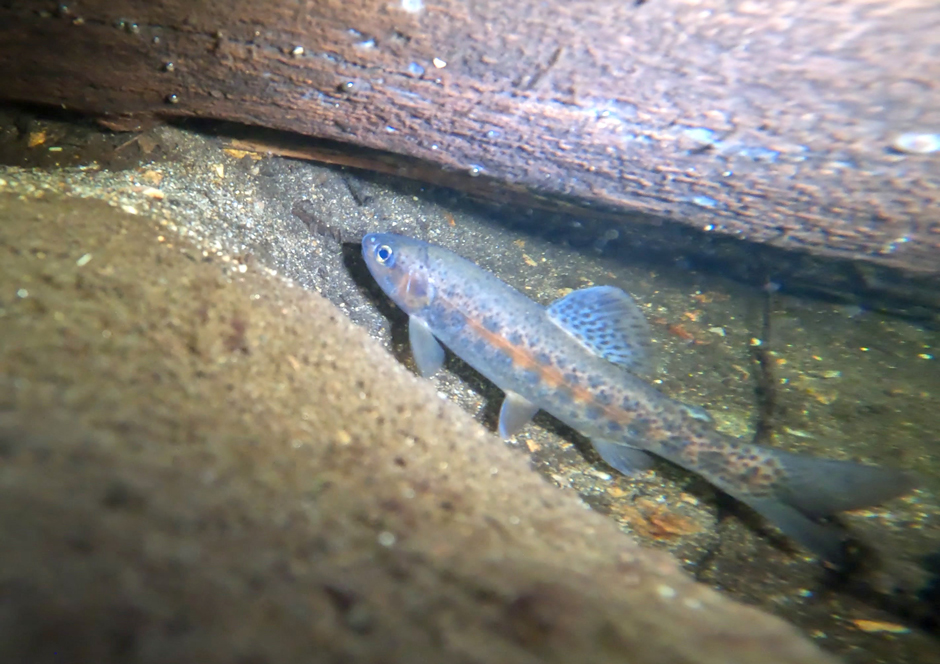
Rainbow trout observed in a pocket of water in the Arroyo Seco. (Credit: © Arev Markarian (2025))
Evaluating Rainbow Trout Translocation Success in the Arroyo Seco Stream
Surveying methods include the use of underwater video cameras, observations during snorkeling, water quality measurements, and environmental condition observations. Camera footage is screened in the field to reveal fish presence, size, and class, as well as the number of fish observed. In-field observation helps guide surveys, as the team can further evaluate the fish.
The footage is later reviewed on a computer screen where the team looks closer at the recorded fish to evaluate population size, fish size, the presence of adipose fins to denote if it was a rescued trout, and observe other features such as parr marks, which are a series of dark vertical markings that appear on the sides of young rainbow trout.
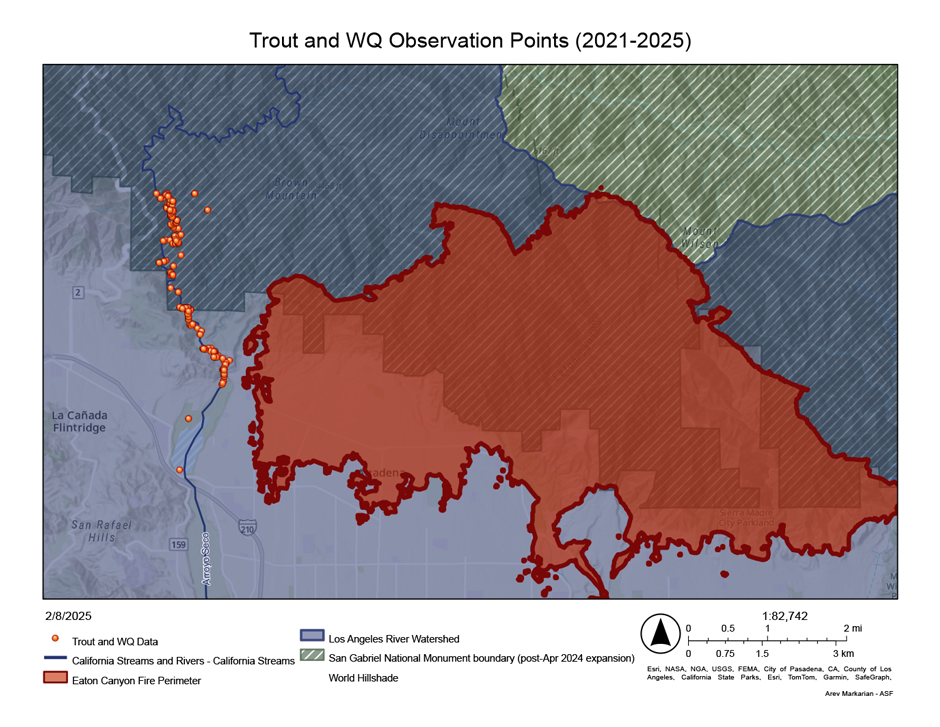
Map indicating where trout were translocated. (Credit: Arroyo Seco Foundation)
In-situ water quality measurements are also conducted using a Horiba multiparameter meter, which measures water temperature, pH, dissolved oxygen, conductivity, turbidity, and total dissolved solids.
Air temperature, habitats, and other field conditions are also noted during the surveys, developing a holistic view of the ecosystem and capturing a snapshot for more comprehensive analysis.
Survey locations are recorded in the field using ESRI Field Maps, which automatically connect and update to an ESRI geographical information system (GIS) once back in the office—minimizing collection and reporting errors.
This online GIS dashboard known as “The ASF Trout and Water Quality Dashboard acts as a hub for open-source conservation data for local, regional, and state agencies as well as an educational resource for the local community,” states Dr. Robert Kurkjian, President of ASF.
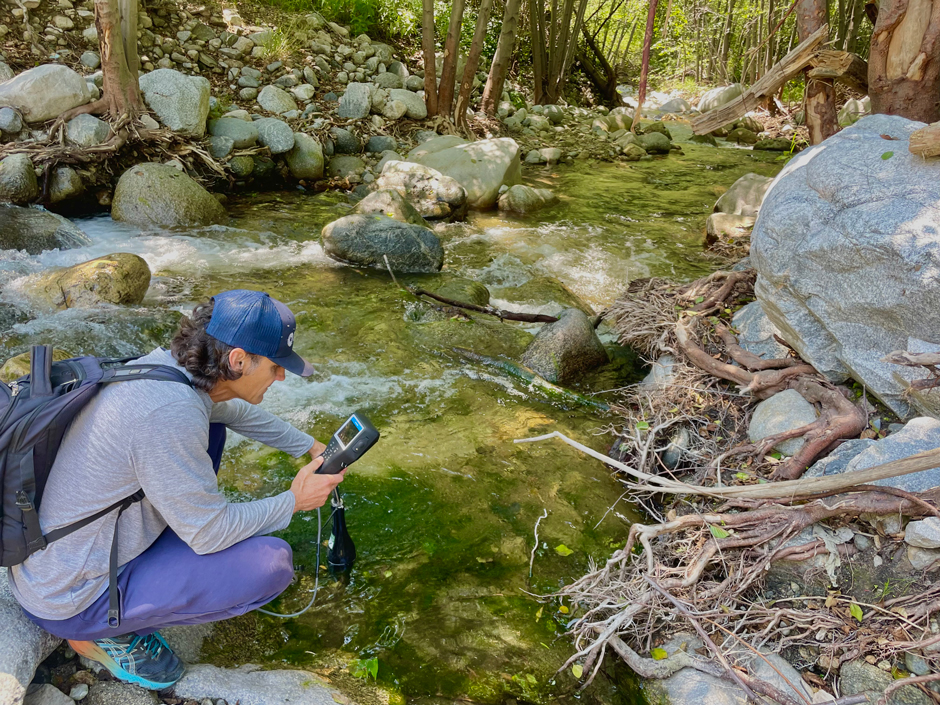
Dr. Robert Kurkjian testing water quality in the Arroyo Seco. (Credit: © Arroyo Seco Foundation (2025))
Conclusion
In the past year, the team has not observed rainbow trout with clipped fins. Considering the lifespan of the rainbow trout, it is believed that the original translocated fish are no longer alive, and the team is instead observing their descendants.
The data made public by ASF helps to further conservation efforts, as it allows for closer analysis of the stream, builds on historical and seasonal data, and connects stakeholders, assisting with planning, education, and outreach.
Arroyo Seco stream flow is also reduced by municipal water diversion, which decreases the stream volume and impacts the trout habitats and their migration. Therefore, ASF encourages water conservation practices and native plant usage by Pasadena residents to reduce water usage thereby limiting withdrawal from the stream. These practices enhance habitat suitability for the native fish, birds, pollinators, and plants within the Arroyo Seco Watershed, as well as in Greater Pasadena.
More information about the Streamflow Enhancement Program and the work of ASF can be found at www.arroyosecofoundation.org and on Instagram @arroyosecofoundation. They can be reached at info@arroyosecofoundation.org. The program is supported by Environmental Strategies International, www.environmentalstrategies.org.




Pingback: FishSens Magazine | What Happens to Fish During Wildfires? - FishSens Magazine